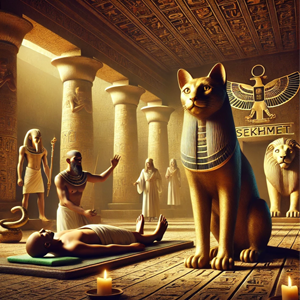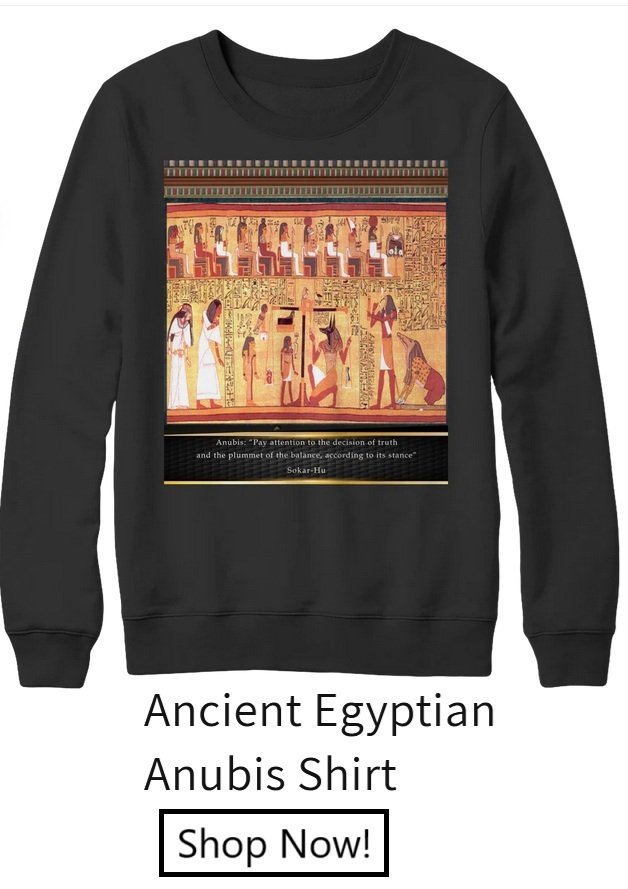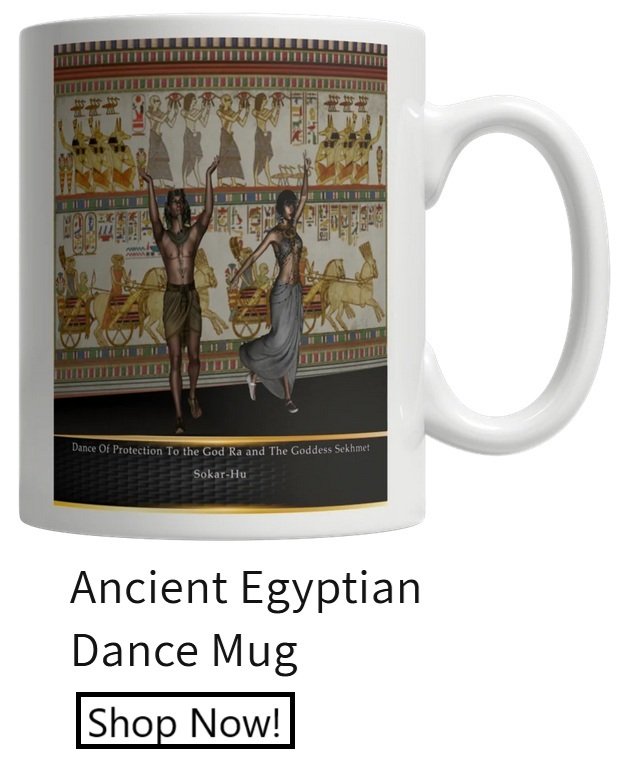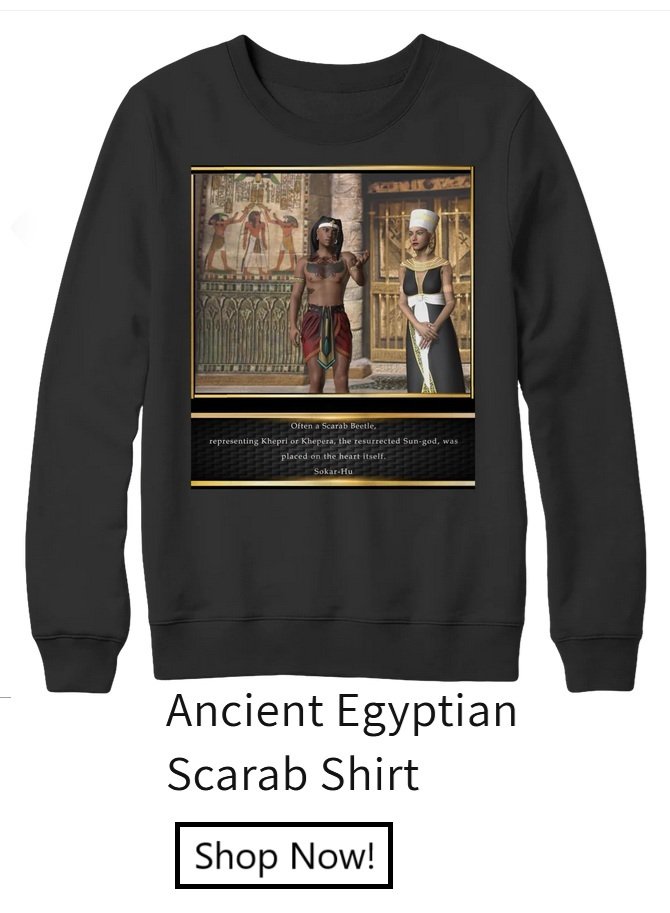 In ancient Egypt, life was woven with tales of gods and the power they granted to animals, creatures believed to be vessels of divine energy. The lioness-headed goddess Sekhmet, known for her duality as both a fierce warrior and a compassionate healer, was central to this mystical understanding. Though feared for her wrath, Sekhmet was equally revered as the goddess of healing, and the animals associated with her—especially cats—were believed to carry her powers.
In ancient Egypt, life was woven with tales of gods and the power they granted to animals, creatures believed to be vessels of divine energy. The lioness-headed goddess Sekhmet, known for her duality as both a fierce warrior and a compassionate healer, was central to this mystical understanding. Though feared for her wrath, Sekhmet was equally revered as the goddess of healing, and the animals associated with her—especially cats—were believed to carry her powers.
This is the story of how Sekhmet’s sacred animals became symbols of healing in Egypt, embodying the mysterious and potent energies of the goddess herself.
The Healing Temple of Sekhmet
In the bustling city of Memphis, by the banks of the Nile, there stood a grand temple dedicated to Sekhmet. This temple was known not only for its ceremonies but as a place of healing where those who were sick or wounded came to seek relief. The high priest of Sekhmet, a man named Thutmose, was skilled in the art of healing and believed deeply in the goddess’s power. He had spent years studying the properties of herbs and the effects of divine blessings, but he held a particular reverence for Sekhmet’s sacred animals.
One evening, a young healer named Amunet arrived at the temple, hoping to learn from Thutmose. She had heard tales of the miraculous recoveries that took place in the temple’s healing chambers and was especially fascinated by the role animals played in these rituals. Thutmose welcomed her and took her under his wing, revealing the ancient wisdom of Sekhmet’s creatures and how their presence was used in the art of healing.
Cats as Guardians of Health
The temple cats were more than just pets; they were cherished healers, believed to bring Sekhmet’s protective and curative energy into the temple. Known for their grace and watchfulness, these cats roamed freely, entering and leaving the healing chambers as they pleased. They were treated with great care, fed with offerings, and adorned with small amulets to honor their sacred role.
As Amunet observed the temple’s daily rituals, she noticed that each sick visitor was blessed by one of the temple’s cats before any other treatment began. Thutmose explained, “These cats are blessed by Sekhmet herself. Their presence drives away unseen forces, illnesses that lurk like shadows. Just as they hunt and rid our homes of vermin, they hunt and remove the sickness that lies within us.”
One day, a mother brought her ailing child to the temple. The boy was feverish and weak, his breath shallow. Thutmose summoned a sleek black cat named Baset, who had an almost magnetic presence. The priest held the cat close to the child, chanting prayers to Sekhmet as Baset settled beside the boy, purring softly. As the cat lay there, the boy’s breathing grew calmer, his fever easing.
Amunet watched in awe as the child’s strength returned over the next few days. To the people, Baset was more than an animal; she was an extension of Sekhmet’s healing hand, a protector against the forces of illness.
Lions as Symbols of Strength and Resilience
While cats were commonly associated with home protection, the lion held an esteemed role in larger healing ceremonies. Lions symbolized strength and vitality, and their images were often used to imbue patients with courage and resilience. Statues of Sekhmet in her lioness form lined the temple walls, and in rituals for serious illnesses, the priests would invoke the spirit of the lion to grant the patient the strength to recover.
On one occasion, an injured soldier was brought to the temple after returning from battle. His body was weakened, and his spirit low. Thutmose placed a lion amulet around the man’s neck, instructing him to keep it close to his heart. “This amulet,” he explained, “holds the strength of Sekhmet’s lions. Wear it, and know that you are protected by her power.”
Over the following days, the soldier held the amulet tightly, praying to Sekhmet for strength. As his wounds healed, he told others that he felt the spirit of the lion within him, a constant reminder of his resilience. The temple priests and healers believed that by invoking the strength of the lion, they could bring forth Sekhmet’s healing energy and imbue their patients with the courage to endure.
Serpents and the Balance of Life and Death
Though often feared, serpents were also seen as sacred to Sekhmet, representing both life and death. In the temple, serpents were viewed as creatures that could carry both poison and cure, embodying the delicate balance that Sekhmet herself represented. Certain rituals used serpent imagery or even real, carefully handled serpents to bring healing to the sick.
One evening, a merchant suffering from a mysterious ailment visited the temple. His skin was pale, and he felt as if a dark force gripped his spirit. Thutmose instructed Amunet to bring a serpent amulet, which was believed to channel Sekhmet’s power over life and death. They placed the amulet on the merchant’s chest, and Thutmose performed a ceremony to “draw out the poison” from his body.
The merchant later claimed that he felt a wave of energy flow through him, as though Sekhmet herself had reached into his body and pulled the sickness away. To the priests, this was proof that the serpent, like Sekhmet, was a symbol of both danger and healing, a reminder that the goddess controlled all forces of life.
The Hawk as the Watchful Healer
Another sacred animal in the temple was the hawk, a creature known for its sharp vision and vigilance. The priests believed that by invoking the hawk’s spirit, they could sharpen their own focus, aiding them in diagnosing and treating ailments. Hawks were associated with the goddess’s ability to see through illusions and identify the root of an illness.
Thutmose often reminded Amunet, “Healing is more than treating the body; it is seeing into the spirit.” In serious cases, he would pray to the hawk, seeking clarity and insight to find the source of the ailment. The hawk’s image adorned the walls of the healing chambers, and it was said that Sekhmet would lend her sight to those who needed it, granting them the wisdom to cure.
A Legacy of Healing and Sacred Animals
Over time, Amunet became a skilled healer, drawing on the wisdom of Sekhmet’s sacred animals to help her patients. She came to understand that each animal carried a different aspect of Sekhmet’s power—cats for protection and gentle healing, lions for strength and resilience, serpents for balance and recovery, and hawks for insight and wisdom.
For the people of ancient Egypt, these animals were more than healers’ aids; they were extensions of Sekhmet’s spirit, protectors of the body and soul. When a person was healed, they would leave offerings not only for the priests but for the temple’s animals, honoring the sacred creatures that had been their protectors and guides.
Amunet would often tell her patients, “Sekhmet’s hand is in every creature that serves her.” Through these animals, the goddess of healing and war was present in every recovery, a constant, powerful force that bridged the worlds of gods and mortals.
In ancient Egypt, the legacy of Sekhmet’s sacred animals endured as a reminder of the healing power found in nature and the belief that through these creatures, the divine watched over and protected all.




 In ancient Egypt, life was woven with tales of gods and the power they granted to animals, creatures believed to be vessels of divine energy. The lioness-headed goddess Sekhmet, known for her duality as both a fierce warrior and a compassionate healer, was central to this mystical understanding. Though feared for her wrath, Sekhmet was equally revered as the goddess of healing, and the animals associated with her—especially cats—were believed to carry her powers.
In ancient Egypt, life was woven with tales of gods and the power they granted to animals, creatures believed to be vessels of divine energy. The lioness-headed goddess Sekhmet, known for her duality as both a fierce warrior and a compassionate healer, was central to this mystical understanding. Though feared for her wrath, Sekhmet was equally revered as the goddess of healing, and the animals associated with her—especially cats—were believed to carry her powers.